VIDEO SCOREBOARD: Norcross High School has what is dubbed the largest videoboard at its football stadium. It’s been in operation since the first of the season. There are two distinctive elements: first, the scoreboard is run now entirely by students of the school, reducing the need for costly professional operators. And secondly, the videoboard is the product of a Duluth company. For more, see both Today’s Focus and Elliott Brack’s perspective below.
IN THIS EDITIONTODAY’S FOCUS: Check Out Story Behind New Norcross High Giant Videoboard
EEB PERSPECTIVE: Here’s How Formetco of Duluth Expanded into Videoboards
FEEDBACK: Wonders If Others in Gwinnett Concerned about National Debt
UPCOMING: Warhol Exhibit Coming to Hudgens; Civil War Exhibit at Heritage Center
NOTABLE: GGC Expansion Continues; Jackson EMC To Build New Gwinnett Facility
RECOMMENDED READ: Where the Money Was by Willie (The Actor) Sutton
GEORGIA TIDBIT: Georgia Economy Booms in Post World War II Era
TODAY’S QUOTE: Those Who Write Can See Differently from Most of Us
MYSTERY PHOTO: Man, That Last Mystery Was Certainly That
LAGNIAPPE: Now You Can Pay Your Taxes with Plastic
TODAY’S FOCUS
Here’s the story behind the giant videoboard at Norcross High School
By Harvey Snider, president, Norcross Touchdown Club
PEACHTREE CORNERS, Sept. 29, 2015 — So, what’s the story on this new 31×50 foot videoboard at Norcross High School’s football field?
Back on August 23, 2014, Norcross High School Head Football Coach Keith Maloof looked across the field at the McEachern High School videoboard before leading his team to victory over Tucker in the Corky Kell Classic. (The game had been moved from the Georgia Dome since the Atlanta Falcons had a football game there on that date.)
Maloof wondered: “How could this school and community best benefit from a videoboard?”
This question led to a comparison, a contrast, a nationwide search and a partnership with John Gibb and Formetco Inc., based in Duluth. The results are amazing.
Instead of thinking of the videoboard as merely an information center for football, people around Maloof got to thinking of other possibilities, including boys and girls lacrosse and soccer, along with movie nights.
This vision led to an innovative vertically integrated educational opportunity that could be used as a new learning tool to teach students how to operate and produce real time video. At the same time, they would be gaining valuable experience which would make them more employable if entering the work force in Georgia’s film industry.
Other new learning experiences for students will come in advertising, marketing and social media.
This story was shared with other key individuals, who learned of the additional benefits beyond Friday night football games. Soon commitments were secured, the funds were raised and construction began!
Many individuals and firms participated to make this a reality. However, special thanks are extended to The Piedmont Bank and Norcross Sports Training Academy for stepping up in a leadership capacity.
As excitement built over late July and early August, many were stunned at the high resolution of the videoboard and began to dream even more of what could be. On different parts of the board at the same time was a recording taken by a drone flying over the stadium, while a ski video also played. The videoboard was unveiled for the first time prior to a downpour during the August 19 community pep rally.
The full capabilities were showcased during the victory over the Milton High team on September 4. All enjoyed the different camera views and especially the interaction with the roving sideline camera crews. Band members, Blue Crew and the Cheerleaders were happy and stunned to see their faces on the giant board. Even parents got into the action! Many were seen recording videos of the videoboard!
Watch for the Norcross Film Team during the football games. You will notice them with their special tee shirts labeled “Film Minions” on the back. When they turn around, you will see bright eyes, laughter and a smile.
Our students are enjoying learning in a different venue. Come out and join the fun next Friday night, October 2 at 7:30 p.m. when the Norcross Blue Devils welcome the North Gwinnett Bulldogs, with highlights being shown on this new videoboard.
EEB PERSPECTIVESporting videoboards open up new opportunity for Duluth’s Formetco
By Elliott Brack, editor and publisher
SEPT. 29, 2015 | Once Duluth-based Formetco Inc. got into electronic billboards, could electronic scoreboards be far behind?
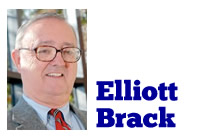 The 100-person Duluth company got national attention recently when it installed at Norcross High what is touted as the largest football “videoboard” (their term) in the United States. Measuring 29×51 feet, the board is impressive for many reasons, among them that a group of high school students, not professional technicians, run all aspects of the board. And sponsored advertising helped offset the purchase cost.
The 100-person Duluth company got national attention recently when it installed at Norcross High what is touted as the largest football “videoboard” (their term) in the United States. Measuring 29×51 feet, the board is impressive for many reasons, among them that a group of high school students, not professional technicians, run all aspects of the board. And sponsored advertising helped offset the purchase cost.
The videoboard is configured so that it can operate for soccer, lacrosse and possibly other sports, not just be used during the football season. Movies can be shown on the board.
Formetco’s first videoboard was for the College Football Hall of Fame in downtown Atlanta. A big installation was at the Lake Point Sporting Complex, near Cartersville. Here 11 boards were installed in May of 2014, at the main entrance, and on the playing fields.
Last year Formetco also put a videoboard at Jacksonville, Fla. University. Other boards have been put up at Johnson C. Smith University’s in Charlotte, at Charleston Southern University and a board will go up soon for basketball at the University of North Carolina at Pembroke. And others are coming: South Forsyth High’s board goes up next week.
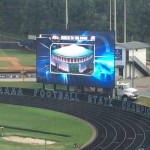 Formetco’s videoboards aren’t limited to the USA. The company is shipping videoboards to Peru and Egypt. All their billboards and videoboards are monitored 24/7 in Duluth. Usually these can often be repaired remotely from Duluth without sending a repairman to the site.
Formetco’s videoboards aren’t limited to the USA. The company is shipping videoboards to Peru and Egypt. All their billboards and videoboards are monitored 24/7 in Duluth. Usually these can often be repaired remotely from Duluth without sending a repairman to the site.
John Gibb, president of Formetco, says his firm’s Minneapolis research and development team came up with enhancements to configure LED bulbs to make the videoboard viable. LED bulbs do not have to be cooled by fans, lowering electrical cost. The thickness of the boards is less than six inches, also reducing the weight. Formetco offers a 10 year LED brightness warranty on the screen.
Since the Norcross videoboard will not be on 24/7, as are billboards, it should have a long life. Gibb adds: “The videoboard is easy to operate because of the software developed with it.”
Todd Heller, Formetco vice president for digital products, has been with the company since 2006 when Formetco bought out his previous firm, Ad-Tech. He found that Norcross High offered six audio-visual classes. Twelve students from these classes have learned how to run the videoboard, “….and by the first game they ran 90 percent of the system, and 100 percent the second game.” Heller, who himself once ran the scoreboard at Georgia Tech, calls such work “….a big deal, and exciting.”
He adds: “It’s quite simple to operate. A student can operate the board with an iPad. You have others on the field helping, such as a guy with a videocamera, and another on audio. You can switch to the video feed. And you have pre-programmable videos to show. It’s fun to see the kids do it. It feels like you are running a television station.”
The cost of the scoreboard was about $200,000, all paid without school funds. The installation price was reduced since Norcross had much of the steel already installed on the previous 15-year old scoreboard. Heller says: “The booster club got involved, and Coach Keith Maloof is a great sales guy. We had a luncheon at the factory for 30 potential sponsors, and that generated a lot of funding. The sponsors were excited to see their message on a 1,500 square foot board.”
As Formetco is finding, adapting technology can lead to new directions. Whoever imagined Formetco in the football video business?
IN THE SPOTLIGHTEdward Jones
 Edward Jones is a different kind of investment firm. To us, face time and think time make sense. We meet with you to learn your individual needs so we can develop a strategy to help you achieve your long-term financial goals. So, whether you want to plan for retirement, save for college, reduce your tax bills or ensure you have income to cover your expenses, you can expect personalized service and long-term investing strategies instead of the latest investment fads. Join the nearly 7 million investors who know. Contact one of our agents today to help develop an investment strategy that makes sense for you. (Click here for financial advisors.)
Edward Jones is a different kind of investment firm. To us, face time and think time make sense. We meet with you to learn your individual needs so we can develop a strategy to help you achieve your long-term financial goals. So, whether you want to plan for retirement, save for college, reduce your tax bills or ensure you have income to cover your expenses, you can expect personalized service and long-term investing strategies instead of the latest investment fads. Join the nearly 7 million investors who know. Contact one of our agents today to help develop an investment strategy that makes sense for you. (Click here for financial advisors.)
- For a list of other sponsors of this forum, go to: Our sponsors.
Wonders what GwinnettForum readers think of the national debt
Editor, the Forum:
 The recent letter from Alex Ortolado, Duluth calls our attention to the debt limit. Of course, the debt Mr. Ortolado addresses is the United States of America’s national debt.
The recent letter from Alex Ortolado, Duluth calls our attention to the debt limit. Of course, the debt Mr. Ortolado addresses is the United States of America’s national debt.
I believe the national debt is currently about $16.5 trillion, and the USA population is about 330 million. Well, $16,500,000,000 divided by 330,000,000 yields $50,000,000 per person. In other words, the federal government, over its 200 plus years of existence, has spent borrowed money on my behalf to the tune of $50,000,000. By the way, that is more than the per capita national debt for Greece, which is viewed as a profligate spender and is probably insolvent.
I think the USA is a good debt risk, and that is why so many other nations invest in our debt instruments. I would be interested to learn what other GwinnettForum readers think about our country’s per capita debt and its debt risk status.
— Michael L. Wood, Peachtree Corners
- SEND FEEDBACK AND LETTERS: elliott@brack.net
Hudgens Art Center to open with Warhol exhibit on Oct. 13
On October 13, The Hudgens Center for the Arts in Duluth will open a major exhibition of works by the artist Andy Warhol. On loan from Wes and Missy Cochran of LaGrange, Ga., the exhibit features works from various periods in Warhol’s career and includes complete sets of his prints from the important Myths and Cowboys and Indians Series.
 Andy Warhol (1928–1987) was an American artist who was the leading figure in the Pop Art movement. Pop Art emerged in the mid to late 1950s and was a move away from traditional fine arts and typically included imagery from popular culture and the news. The Hudgens Works by Warhol: From the Cochran Collection exhibit will feature 36 silkscreen prints dating from 1974 through his last series done in 1986, just before his death the following year. The collection features images of such iconic figures as Superman, Mickey Mouse, John Wayne and John Kennedy as well as two versions of Moonwalk.
Andy Warhol (1928–1987) was an American artist who was the leading figure in the Pop Art movement. Pop Art emerged in the mid to late 1950s and was a move away from traditional fine arts and typically included imagery from popular culture and the news. The Hudgens Works by Warhol: From the Cochran Collection exhibit will feature 36 silkscreen prints dating from 1974 through his last series done in 1986, just before his death the following year. The collection features images of such iconic figures as Superman, Mickey Mouse, John Wayne and John Kennedy as well as two versions of Moonwalk.
According to Dr. Dorothy Joiner, Professor of Art History at LaGrange College, “The Cochrans are especially fortunate to hold a complete set of Warhol’s series Cowboys and Indians (1986). Though not as well-known as his other work, these prints are significant in the illumination of America’s collective mythicizing of the West.”
According to Angela Nichols, Director of Exhibitions and Public programs at The Hudgens, “This is an exciting time for The Hudgens. We present a wide variety of high quality fine art exhibitions year round, but to be able to bring an artist with this kind of name recognition and works of art of this caliber to Gwinnett gives us an opportunity to make ourselves known as a serious arts presenter.”
Guests at the annual fundraiser, the Hudgens pARTy, on October 10, will get a chance to be the first to experience the exhibition, which will open to the public on Tuesday, October 13. The works will be on display through December 19, 2015.
Heritage Center Civil War photography exhibit runs Until Jan. 4
Photography was in its infancy when the Civil War broke out in 1861, and soldiers were among the first to truly take advantage of this new technology. Thousands of soldiers, from all ranks and walks of life, made sure to pose for the camera before setting off for the horrors of battle.
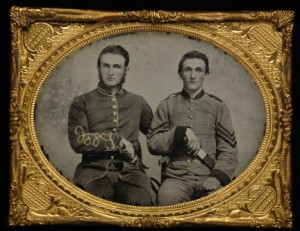
This photo of brothers Charles and John Hawkins was taken by an unknown photographer shortly after the two enlisted in the 38th Georgia Infantry Regiment. (Photo from the collection of David Wynn Vaughan)
The Environmental and Heritage Center (EHC) will host an unique exhibit of Civil War photos from September 26, until January 4, 2016. Portraits In Gray: A Civil War Photography Exhibition Featuring The Collection of David Wynn Vaughan showcases those soldiers in a way that mere words never could.
Commemorating the 150th anniversary of the end of the Civil War, the exhibit was developed by the Southern Museum of Civil War and Locomotive History.
The exhibit includes more than 70 high-quality enlarged reproductions from the David Wynn Vaughan collection, the largest collection of Confederate images in the United States. Nearly all of the photographs featured in the exhibit are identified, giving names and stories to otherwise anonymous faces staring back across the gulf of 150 years. In conjunction with the exhibit, the EHC plans to highlight some of its unique Civil War artifacts, including a letter that connects two of the county’s historic properties.
- For more information, visit www.gwinnettEHC.org.
Snellville plans first Art-on-the-Green for Oct. 4
Snellville’s Arts Commission is bringing art to the Towne Green. The first Art-on-the-Green event will take place from 3 to 6 p.m., October 4 on the Towne Green in front of City Hall, 2342 Oak Road. The event will feature art for sale ranging from $25 to $1,500, music from the Jazz Fusion Kings, beverages from the Grayson Coffee House and chili from American Tavern.

Councilman Dave Emanuel and Snellville Arts Commission Vice Chairwoman Brittany Washington show a painting by artist Leroy Banks which can be purchased at the first Art on the Green event.
Snellville Arts Commission Vice Chairwoman Brittany Washington says: “Art on the Green is a great way of bringing art and the community together,” adding the commission hopes to have a similar event next year. “The Snellville Arts Commission has worked hard to bring eight different types of art forms to the community for this one-day event. Come join us, bring your blankets and lawn chairs and let’s have a relaxing afternoon on the Green.”
Art on the Green will feature six different “mini galleries” using seven different mediums including acrylic, charcoal, pastel, photography, watercolor, glasswork and oil.
Councilman Dave Emanuel adds: “The city of Snellville is fortunate to have an Arts Commission that is dedicated to bringing concepts to life. Art on the Green began as a casual conversation, and Brittany Washington and her fellow arts commissioners have made it a reality. They have also brought theatrical productions, art exhibits, book signings and music to our city. Art on the Green is yet another example of the significant and positive impact created by the Snellville Arts Commission.”
Lowe’s Home Improvement on Highway 124 is also sponsoring the event.
- For more information on our featured artists for Art on the Green, visit www.snellvillearts.com.
GGC expansion continues with new academic building
A construction crane will once again dominate the Georgia Gwinnett College campus as the institution begins a major expansion of one of its main academic buildings. Building C will more than double in size with the addition of classrooms and offices that will enable GGC to serve its anticipated fall 2016 enrollment of about 13,000.
GGC President Stas Preczewski says: “This is an important project for Georgia Gwinnett because we again find our ability to serve students limited by the capacity of our facilities. The Building C expansion will allow us to accommodate our projected enrollment increase of more than 1,000 additional students. The members of the Gwinnett delegation were instrumental in obtaining the funds for the construction of the addition. Without their perseverance, we would be a year behind schedule. We owe a debt of gratitude to them. ”
GGC’s space utilization rate of 72 percent is the highest within the University System of Georgia and almost double that of the next highest institution.
The current building of about 52,300 sq. ft. was built in two phases and is two stories high. The three-story addition will add 54,300 sq. ft. It will include stairwells encased in glass windows, complementing other three-story glass features on other campus building facing its central lawn. The expansion will match the brick and metal style of the rest of the college’s structures.
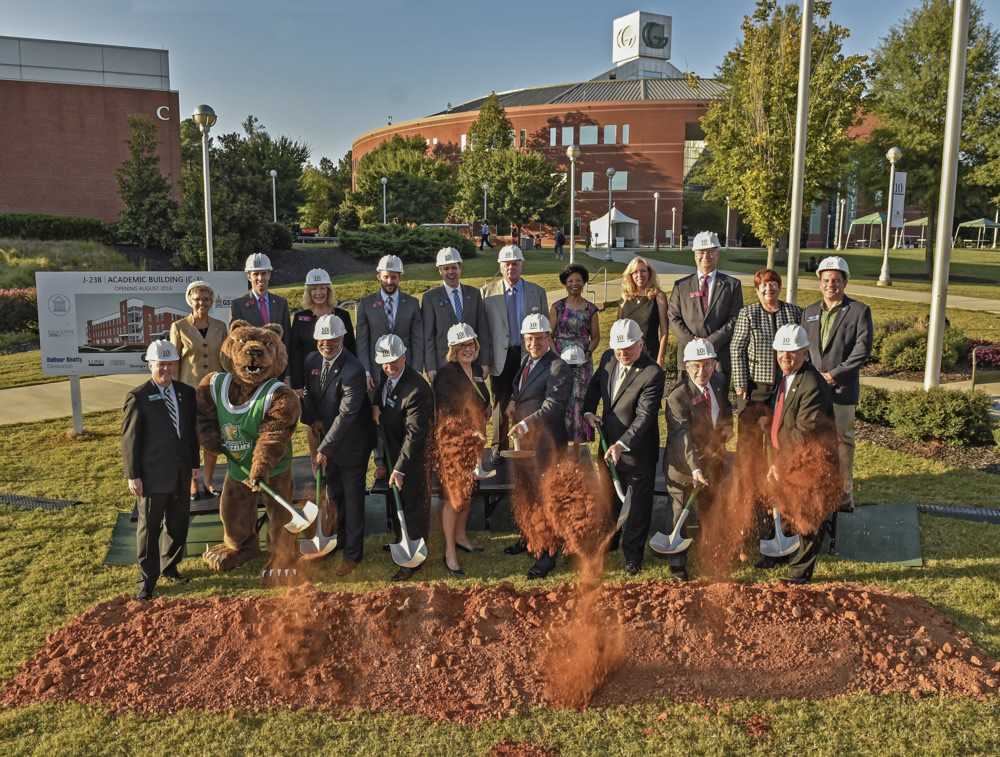
Present for a recent groundbreaking ceremony were (front row from left), GGC Stas Preczewski; General Grizzlie; Rep. Dewey McClain; GGC Associate Vice President of Facilities Frank Covington; Sen. Renee Unterman; University System of Georgia Vice Chancellor for Real Estate and Facilities Jim James; Rep. Tom Rice; Rep. Brooks Coleman; Georgia House of Representatives Chairman for Higher Education Carl Rogers, (back row) Lawrenceville Mayor Judy Jordan Johnson; Rep. Tim Barr; Rep. Valarie Clark; Rep. David Clark; Sen. P.K. Martin; GGC Foundation Chairman Tommy Hughes; GGC Interim Senior Vice President for Academic and Student Affairs/Provost Lois C. Richardson, Ph.D.; GGC Vice President of Business and Facilities/Chief Financial Officer Laura Maxwell; Rep. Tom Kirby; Gwinnett County Commission Chair Charlotte Nash and Sen. Curt Thompson.
Jackson EMC breaking ground Oct. 4 on new Gwinnett office
Jackson EMC is breaking ground October 5 on a new customer and administration building on its Lawrenceville campus. The facility will be built by Carroll Daniel Construction Group of Gainesville, Ga., and construction is expected to be complete in August, 2016.
![]() The new facility will provide an easy-access customer entrance directly on Buford Drive, near the intersection with Georgia Highway 316. Randy Dellinger, district manager, says: “Jackson EMC has seen tremendous growth in Gwinnett County over the past few decades, and we need a facility that will serve the needs of this growing area.”
The new facility will provide an easy-access customer entrance directly on Buford Drive, near the intersection with Georgia Highway 316. Randy Dellinger, district manager, says: “Jackson EMC has seen tremendous growth in Gwinnett County over the past few decades, and we need a facility that will serve the needs of this growing area.”
The new $5 million facility, designed by Millard Architects, Inc. of Roswell, will be constructed on land owned by Jackson EMC on Buford Drive, adjacent to the current offices located on Swanson Drive. It will include a 16,583 square foot administrative building, with a drive-thru canopy and two drive-thru lanes, an auditorium, and two electric vehicle charging stations. Dellinger said that throughout the design process the cooperative has kept an eye on costs to construct an efficient and economical facility.
“By using Carroll Daniel Construction, we’ve honored a commitment we made at the beginning of this process to select a contractor from the region we serve,” says Dellinger. The ten-month construction project is expected to create jobs in the local economy. Carroll Daniel has E-verified project workers, and hired sub-contractors from the area who are qualified and competitively priced.
Jackson EMC’s Lawrenceville office serves more than 110,000 meters in Gwinnett County, roughly half of the cooperative’s total number of meters across a 10-county region. Founded in 1946, Carroll Daniel Construction is in its third generation of family leadership and is one of Georgia’s fastest growing commercial construction companies.
Snellville’s new finance officer originally from Chicago
Snellville officials recently welcomed a new finance officer-controller to the staff at City Hall. She is ChaRita Echols, who comes to the city with more than 20 years of accounting experience. Echols has an Associate’s Degree in Accounting from Gwinnett Technical College and a Bachelor’s Degree in Management from Colorado Technical University. Originally from the Chicago area, Echols has lived in Lawrenceville for 15 years and has one son, DeVontre’ Echols, who attends Kennesaw State University.
RECOMMENDEDWhere the Money Was
An autobiography by Willie Sutton
 Now here is an unusual book which I enjoyed reading. Besides robbing over 100 banks of $2 million,Willie Sutton is famous for saying he robbed banks because, “That’s where the money is.” All he wanted to do in life was rob banks. He also broke out of at least three prisons. In prison he became quite educated. He never fired a gun and many times his guns were not loaded. He disguised himself for his robberies. After retiring, he lived quietly in Florida, was a paid consultant to banks on security and did commercials for credit cards. Actually he never said he robbed banks because that’s where the money was. An interviewing reporter added that line to embellish his story. However, he says, if he had been asked this question, he would have said his famous quote because that really was the reason he robbed banks.” The book’s full title is Where the Money Was – The Memoirs of a Bank Robber. An Autobiography.
Now here is an unusual book which I enjoyed reading. Besides robbing over 100 banks of $2 million,Willie Sutton is famous for saying he robbed banks because, “That’s where the money is.” All he wanted to do in life was rob banks. He also broke out of at least three prisons. In prison he became quite educated. He never fired a gun and many times his guns were not loaded. He disguised himself for his robberies. After retiring, he lived quietly in Florida, was a paid consultant to banks on security and did commercials for credit cards. Actually he never said he robbed banks because that’s where the money was. An interviewing reporter added that line to embellish his story. However, he says, if he had been asked this question, he would have said his famous quote because that really was the reason he robbed banks.” The book’s full title is Where the Money Was – The Memoirs of a Bank Robber. An Autobiography.
— Alex J. Ortolano, Duluth
An invitation: what books, restaurants, movies or web sites have you enjoyed recently? Send us your recent selection, along with a short paragraph (100 words) as to why you liked this, plus what you plan to visit or read next. –eeb
GEORGIA ENCYCLOPEDIA TIDBITGeorgia economy booms in post-World War II era
(Continued from previous edition)
Following the cessation of hostilities in Europe and the Pacific, Georgia’s booming urban centers continued to thrive, effectively parlaying their wartime recovery into postwar prosperity. Between 1946 and 1955 some 500 new factories began production throughout the state, opening doors of opportunity and dramatically altering Georgia’s economic landscape. At the same time, the mechanization of the state’s agriculture diminished the need for farm laborers, precipitating an urban migration that depopulated much of Georgia’s countryside. As a consequence, more Georgians were employed in manufacturing than farming by 1950.
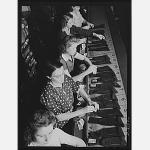 The rural exodus that attended the state’s economic development disrupted the stability and cohesion of community life for those Georgians who were forced to find employment in urban locales. However, while many expressed regret at the passing of the old order, most Georgians welcomed the perks of postwar prosperity. Over the course of the next two decades, wages continued to rise, in part because the federal War Labor Board buoyed regional wages during World War II, and Georgians enjoyed ever-increasing standards of living. By 1960 the state’s per capita income had reached 73 percent of the national average, whereas in 1940 it stood at a meager 57 percent. Rates of homeownership increased, as did the percentage of citizens who enjoyed indoor plumbing, electricity, and air conditioning.
The rural exodus that attended the state’s economic development disrupted the stability and cohesion of community life for those Georgians who were forced to find employment in urban locales. However, while many expressed regret at the passing of the old order, most Georgians welcomed the perks of postwar prosperity. Over the course of the next two decades, wages continued to rise, in part because the federal War Labor Board buoyed regional wages during World War II, and Georgians enjoyed ever-increasing standards of living. By 1960 the state’s per capita income had reached 73 percent of the national average, whereas in 1940 it stood at a meager 57 percent. Rates of homeownership increased, as did the percentage of citizens who enjoyed indoor plumbing, electricity, and air conditioning.
Prior to World War II, Georgia’s politics were profoundly undemocratic and incompatible with social progress. The white primary, which barred black participation in Democratic primaries, effectively disfranchised African Americans until its abolition in 1946. At the same time, the county unit system enabled sparsely populated rural counties to exercise undue influence in statewide primaries by limiting the electoral significance of Georgia’s expanding metropolitan areas. When combined with an anti-progressive tenor in Georgia’s politics more generally, the white primary and the county unit system allowed county seat oligarchs to dominate state politics until the middle of the twentieth century.
Perhaps more than any other figure in state government, Eugene Talmadge personified the demagoguery and corruption of Georgia’s politics during this period.
During his three terms as governor, Talmadge used the levers of Georgia’s machine politics and his personal charisma to maintain the state’s conservative political traditions.
After becoming embroiled in the notorious Cocking Affair during his third term, however, Talmadge was defeated in the 1942 Democratic primary by reform candidate Ellis Arnall.
Talmadge’s defeat was likely aided by his well-known enmity against President Roosevelt, and by the desire of voters to maintain good relations with Washington, D.C., during wartime. Arnall recognized the need for warm relations with Roosevelt and quickly passed a resolution supporting the president’s conduct of the war. During his four years (1943-47) as governor, Arnall, who was the first governor to serve a four-year term, amassed an impressive record of reform by increasing education spending, managing the state’s economic recovery, and balancing the state’s budget for the first time in more than a century.
(To be continued)
- To access the Georgia Encyclopedia online, go to http://www.georgiaencyclopedia.org
Distinctive buildings, sky, water
The distinctive water, the buildings, the clear sky…..what does this tell you about this Mystery Photo. Figure it all out, and send your answer to elliott@brack.net and be sure to include the town where you live.
 Absolutely no one recognized a mighty picturesque city in Normandy, Honfleur and its waterfront and church. The photo was sent in by Tom Merkel of Berkeley Lake.
Absolutely no one recognized a mighty picturesque city in Normandy, Honfleur and its waterfront and church. The photo was sent in by Tom Merkel of Berkeley Lake.
Now pay your taxes (for a fee) with credit-debit cards
 PAY WITH PLASTIC: Tax Commissioner Richard Steele has installed self-service kiosks to all tax commissioner locations to allow customers to pay property tax using credit or debit cards. He explains: “As customers come into our tag offices to renew their motor vehicle registration, they can also pay their property tax using credit or debit cards with the new kiosks. For the approximately 40 percent of Gwinnett property owners who pay their own property tax, this will add another convenient way to pay.”
PAY WITH PLASTIC: Tax Commissioner Richard Steele has installed self-service kiosks to all tax commissioner locations to allow customers to pay property tax using credit or debit cards. He explains: “As customers come into our tag offices to renew their motor vehicle registration, they can also pay their property tax using credit or debit cards with the new kiosks. For the approximately 40 percent of Gwinnett property owners who pay their own property tax, this will add another convenient way to pay.”
To pay property tax at the kiosk or online, there is a 2.29 percent service fee for using a credit card and a $3.95 flat fee for using a debit card. Checks are accepted online at www.GwinnettTaxCommissioner.com without a fee. Steele is shown helping a customers with the kiosk.
CREDITSGwinnettForum is provided to you at no charge every Tuesday and Friday. If you would like to serve as an underwriter, click here to learn more.
- Send your thoughts, 55-word short stories, pet peeves or comments on any issue to Gwinnett Forum for future publication.
- MORE: Contact Editor and Publisher Elliott Brack at: elliott@gwinnettforum.com



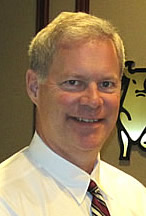









Follow Us